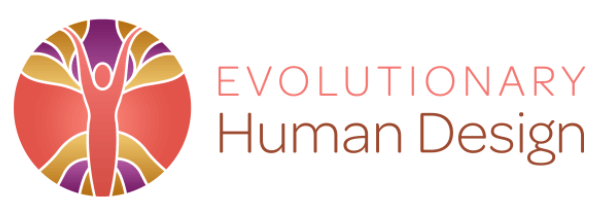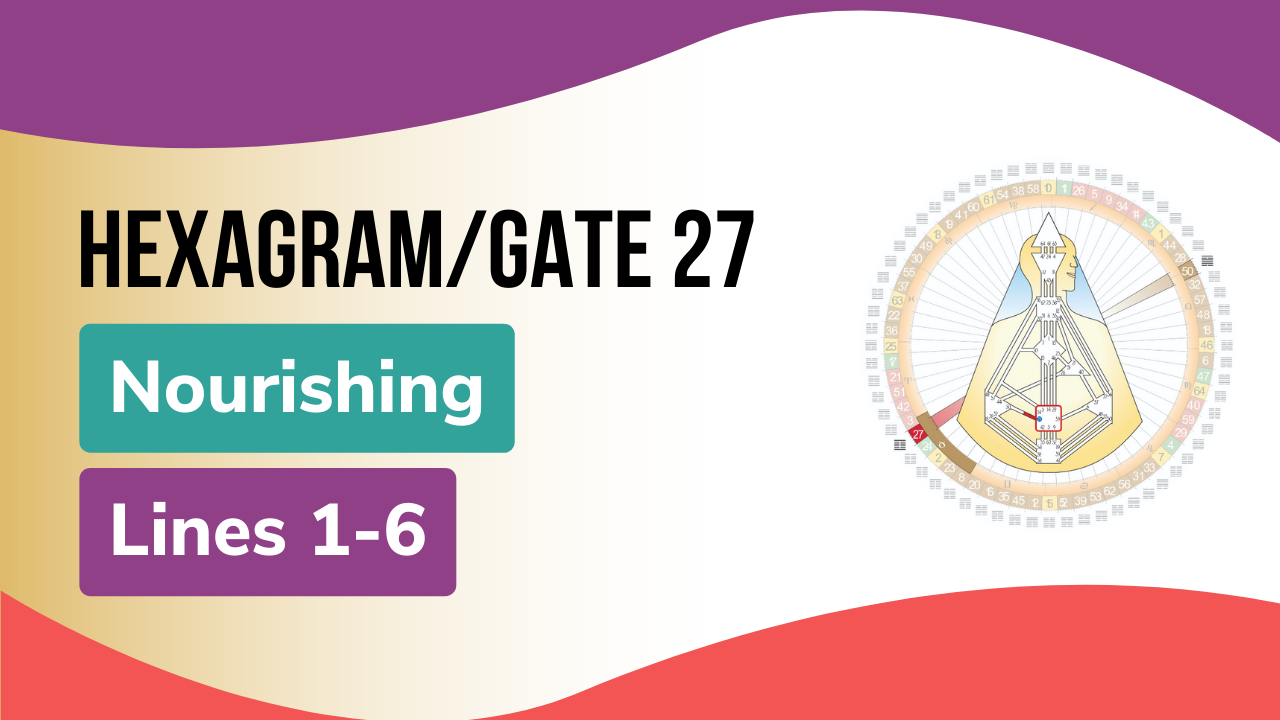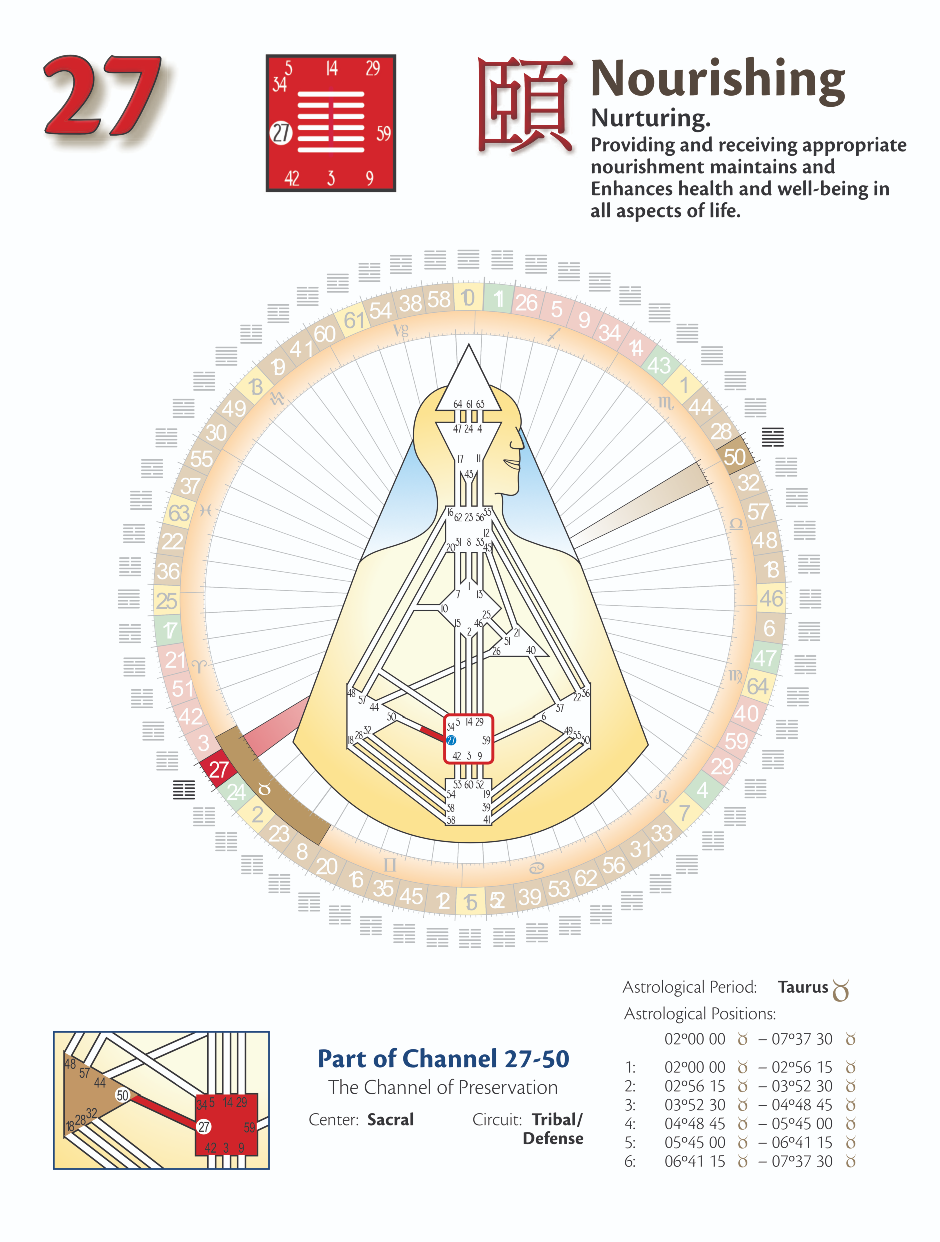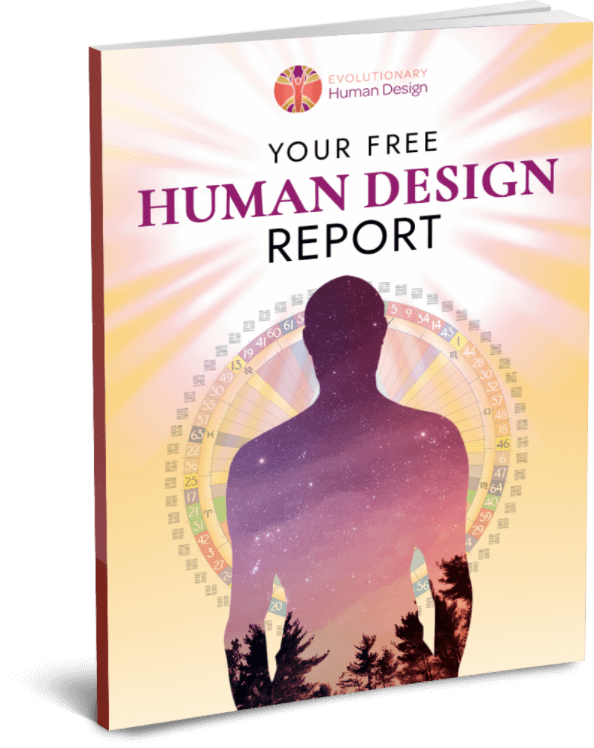What does it mean to nourish yourself? What do you do to ensure your health and wellbeing? And when it’s time to nourish others, how do you do so without depleting yourself? The answers are in your Human Design Chart.
Last time, we explored Hexagram 3, learning how to trust ourselves to innovate and forge ahead with new ways of being, living, and thinking. Now, the sun is moving into Gate 27, which we call “Nourishing.”
What’s involved in nourishing ourselves? Along with the 50th gateway, the 27 makes up this channel that goes from the Sacral Center to the Spleen Center. And the Spleen Center is the Center of health and wellbeing, which is what nourishing is all about.
If you’ve got the 27 in your Design, you’ll know very well that a lot of people look to you to provide that sense of nourishment in their lives. And if you have the whole channel, the 27-50, you might find that everywhere you go, everybody expects you to look after them. So, you have to be crystal clear about who and what gets your attention and energy. You have to look out for yourself. Otherwise, you’ll get completely exhausted.
Nourishment comes in a multitude of forms to meet physical, mental, emotional, and spiritual needs. But in order to look after the community and support others, you must first look after yourself. if you’re wiped out, you’re not in any position to help anyone else. So how do we do that?
Let’s take a look at Gate 27 in the Human Design Chart, line by line:
First Line: Nurturing Yourself
The first line provides the foundation for the whole Hexagram. And here, the line is called, “Nurturing Yourself.” It’s echoing this idea of taking care of number one. Make sure you are in a good space, you are healthy, you are nourished, you are rested, you are energized. Then you’re in a position to look after everybody else.
Putting the care of others above your own is an easy way to get unsettled. There is a risk of allowing yourself to be taken for granted if you’re not paying attention to what the situation really calls for.
Nobody comes here to get wiped out. We come here to be fulfilled in our lives. And if fulfillment is found in nurturing other people and nurturing the world around you, that’s great, but do it according to your own Type and Authority, your own Human Design Chart. If you’re not clear in that, you won’t be much good to anyone else, and certainly not to yourself!
Second Line: Being Accountable
The second line here is called “Being accountable: taking good care of yourself and your needs is natural.” Second lines always have this quality of being natural. The world is full of all sorts of ideas and programs for you—“you’re supposed to do this, you’ve got to do that.” And this can put pressure on you. It’s a mental pressure, an obligation to commit to other people’s ways of doing things.
So, the second line calls on you to be accountable. You either nourish your needs or generate a reliance on others to provide resources for you. If you don’t nourish your own needs. If you’re not accountable to yourself first, you become overwhelmed. And then it’s only natural to look to others to provide resources for you.
A great reservoir of caring and resources exist between many lives in many ways. Sometimes something as small as a smile or a friendly “hello” can energize somebody. It can nourish them by making them feel recognized and noticed. Other times people need a big meal or an arm around the shoulder to feel cared for. And the more natural the second line can be in providing that nourishment, the greater the effect it will have. But always be accountable to yourself first.
Third Line: Being Resourceful
Here, the third line is called “Being resourceful: recognizing who and what is nourishing in any situation.” Third lines are very quick to jump into things. In this case, they want to jump in and help out, provide nourishment, or receive nourishment, often without thinking things through beforehand.
Your constant search for nourishment can lead you to look for it needlessly and in unhealthy places. So, this is a call to take a step back, find out what’s actually needed here, and then get involved if you are called to do so. The third line has to be really watchful about this because they tend to get their fingers burned getting involved in situations that don’t serve them.
You undergo transformation through indulging personal needs on many levels. This involves recognizing who and what is nourishing in any situation. Go looking for the right resources: the people and places where nourishment exists naturally. But on the other side of this, you run the risk of overfilling your plate, of taking on too much. Part of being resourceful is being watchful of what you’re taking on as well as what you’re putting out.
Fourth Line: Being Bounteous
The fourth line is called, “Being bounteous: supporting others through giving and receiving.” The fourth line always wants to bring other people on board and foster a sense of community. And here, there’s the potential to be overflowing with health and wellbeing and wanting to share it, a sense that there’s more than enough to go around.
Your generous disposition to nourish others comes from your own inner wellbeing. Isn’t it an amazing thing when you feel so complete in your life, so centered and so clear, that it’s just so easy to be able to offer resources to others without depleting yourself?
Your drive to provide for everyone can easily deplete yours and other resources. There are always situations in which certain people are completely without resources. The fourth line is very quick to realize this, and feels compelled to help. But beware of going overboard. If you just give and give and give, you’ll drain yourself and those around you. This is not about killing oneself on somebody else’s behalf. It’s about balance. It’s about interacting clearly, with awareness, to fulfill needs and support others through giving and receiving.
Fifth Line: Dispensing
The fifth line always has the vision, the broad overview of things. It’s the guide, the leader. And here, the line is called “Dispensing: handling resources for the greatest benefits.” You have the ability to see who needs what. Who needs nourishment? Who needs a little uplift? Who needs support? And you easily distribute nourishment for everyone’s benefit.
But there’s another side to this. Fifth lines always find themselves living in the projections of other people. Because you have the ability to provide, people expect you to. They look to you for support, to help solve their problems. And you run the risk of becoming overwhelmed by demands if you’re not careful.
You have the power and principle to effortlessly care for the wellbeing of others, but you need to retain an inner balance in the face of seemingly endless demands for caring. It comes down to living true to your own nature, according to your Human Design Chart. If you’re clear on that, if you’re aligned with your Type and Authority, you’ll be better equipped to engage in things that benefit everyone, including yourself, and less likely to get overwhelmed trying to rescue everyone all the time.
Sixth Line: Providing Guardianship
The sixth line is called “Providing guardianship: qualifying the use of all nourishing resources.” The sixth line is like the administrator. You look after the resources, making sure they’re allotted appropriately, overseeing everyone’s wellbeing.
You directly assist those who really need nourishment. Not everybody needs help all the time. A lot of people are in great shape. And the sixth line can see exactly who needs what and when. Your holistic approach provides caring through all aspects of any healing process. Remember, we’re not just talking physical nourishment here. We’re talking about physical, mental, emotional, and spiritual nourishment.
Nourishment comes from so many different places. And it can be a simple thing that makes us feel nourished, or it can require some heavy lifting, a real input of energy. And the sixth line is just here to oversee how we provide the right resources in the right places, on the right levels.
And that’s essentially what this 27th gateway is all about: making sure that nourishment is available on multiple different levels. It’s about not only taking care of Number One, but taking care of our community, our family, our friends, our neighborhoods, our planet, without depleting Number One in the process.
So, there we are, that’s Gate 27. We’ll check in again soon. In the meantime, if you’d like to learn more about how your Human Design Chart informs and shapes your life, get your Free Human Design Report today.




